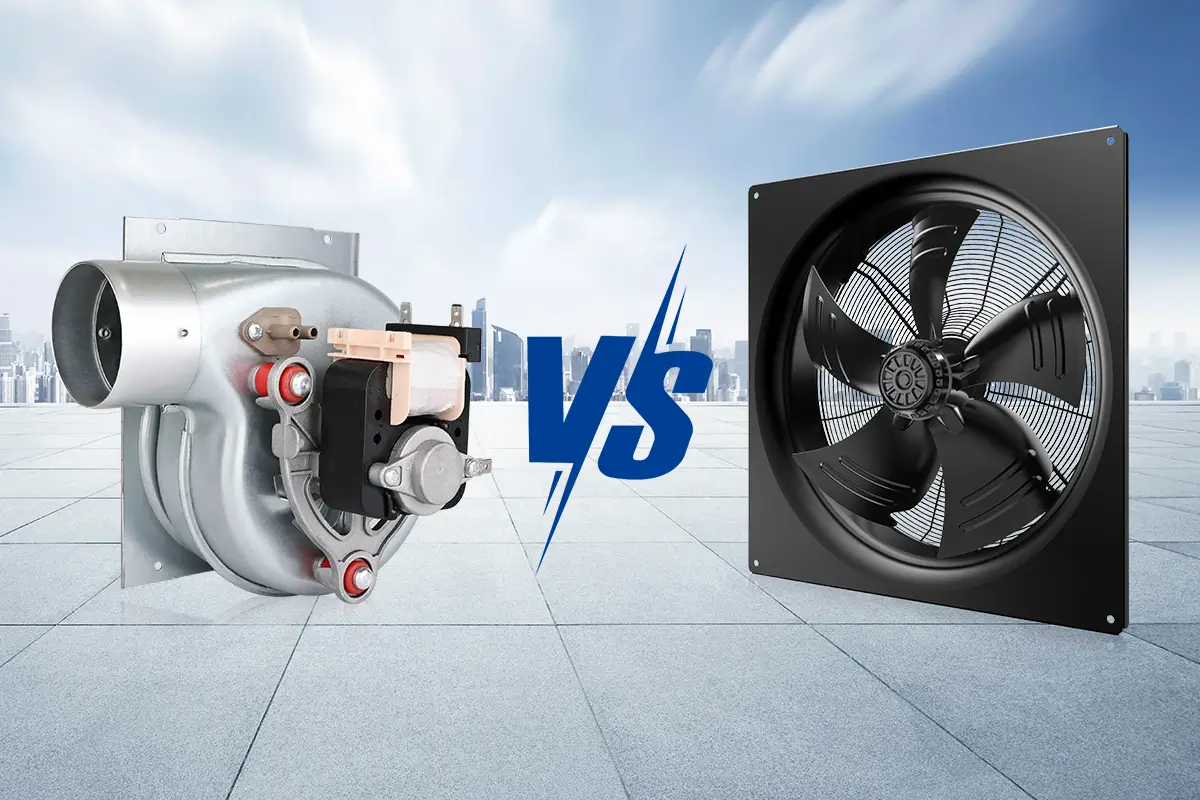Introduction
When we discuss ventilation and air movement, many people confuse the words “fan” and “blower.” It is key to understand the main difference between axial fans and centrifugal compressors. These are the two main types of fans and blowers. They work in different ways and can manage different pressures. Knowing this will help you pick the right equipment for your needs.
Understanding Fans and Blowers
Fans and blowers help to move air. You can find them in homes, businesses, and factories. Although they both move air, they do it in different ways. Each has its own special features. The main difference between fans and blowers is the amount of pressure they can handle and how they move air. Fans work well at lower pressure. They push air evenly across a room. Blowers, on the other hand, are designed for higher pressure tasks. They produce a strong stream of air for specific jobs.
Basic Definitions
A fan is an easy device. It moves air by using spinning blades or vanes. Electric motors usually power these blades. The blades make changes in pressure. This helps air to flow better. Fans are good for moving a lot of air while keeping pressure changes small.
A pressure blower, or just a blower, works with a higher pressure ratio than a fan. Blowers are great for tasks that need strong air movement and compression. These tasks can include moving materials, collecting dust, and helping with combustion.
Fans come in different types. There are axial fans, centrifugal fans, and cross-flow fans. Each type moves air in its own way. This means that each fan is good for different tasks.
Key Differences in Operation and Design
A big difference between fans and blowers is their pressure ratio. The pressure ratio is the link between discharge pressure and suction pressure. You get this ratio by dividing discharge pressure by suction pressure. This shows how these devices work with pressure.
Fans are good for tasks that have a pressure ratio of up to 1.11. This means they work best for low-pressure jobs. They are made to move large volumes of air easily. Blowers work at medium pressure. They can, however, reach a higher pressure ratio between 1.11 and 1.2. This lets them do jobs that need more pressure. They have special features to handle this higher pressure well.
Types of Fans
Axial fans and centrifugal fans are the two main types of fans. They each offer special benefits. Axial fans are easy to use. They work well to move large amounts of air. You often see them in HVAC systems and for cooling.
Centrifugal fans have a unique design. This design helps them generate more air pressure. They can push air with more strength. As a result, they are excellent for tasks like collecting dust and moving materials.
Axial Fans
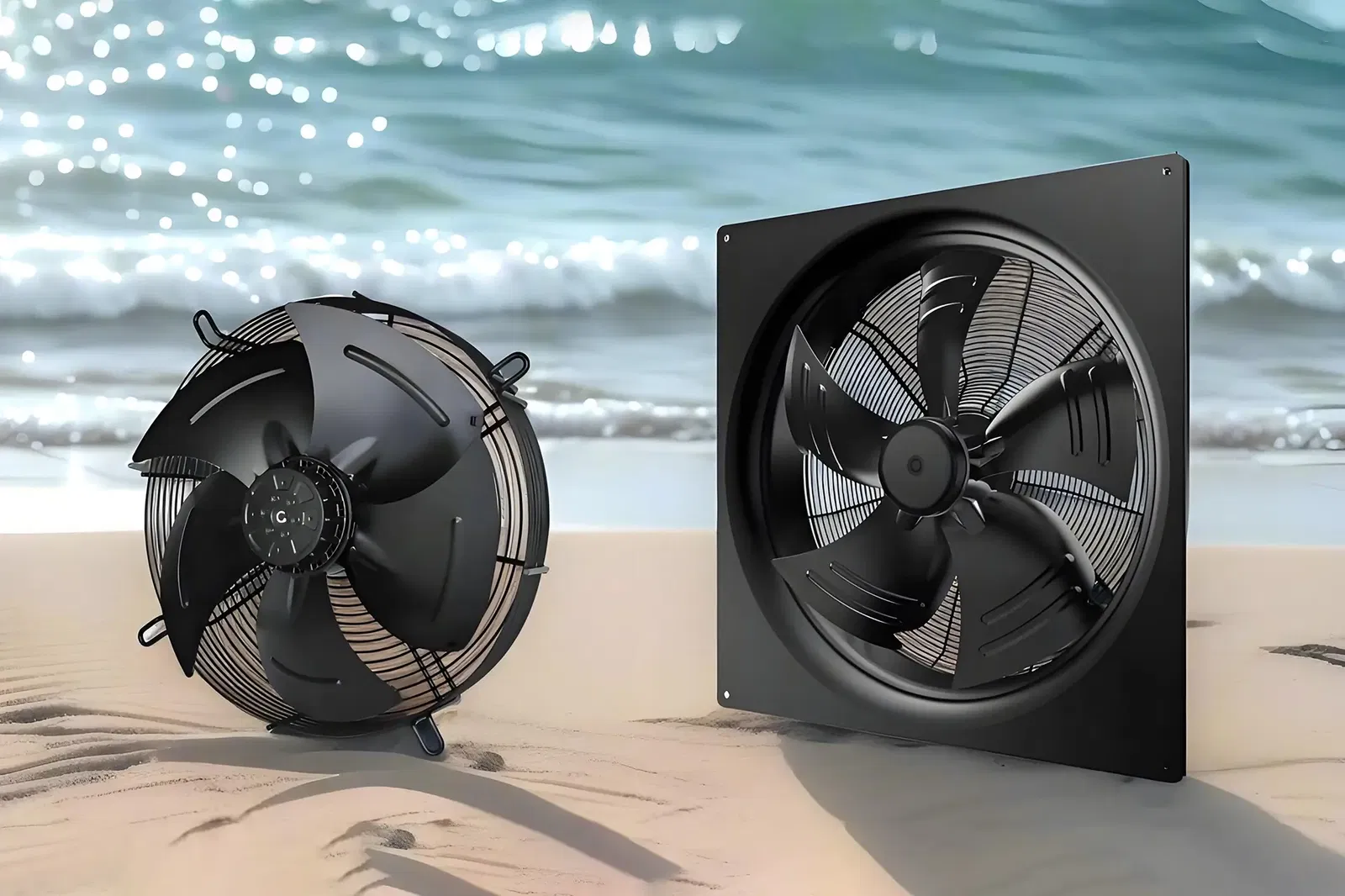
Axial flow fans are easy to recognize. They have blades that look like a propeller. These fans pull in air from one direction and push it out the same way. Their simple design helps them move large volumes of air over short distances.
You can see these fans in many places. They are used in homes as ceiling fans. In factories, they help with cooling systems. These fans create a steady flow of air in a specific direction. This helps with ventilation and keeps everything cool.
Axial fans are not the best option if you need high pressure or careful control of airflow. However, they are easy to use. They move large volumes of air efficiently and are also cost-effective.
Centrifugal fans
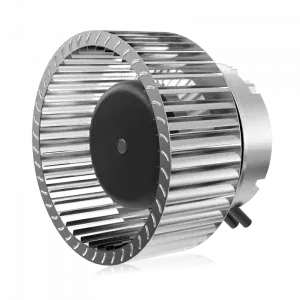
Centrifugal fans and axial fans are different. Centrifugal fans use centrifugal force to move air. When the impeller inside the fan spins, it pulls in air and pushes it out to the sides. This action creates strong air pressure. Because of this, centrifugal fans can produce higher pressures than axial fans.
Centrifugal fans are helpful for many jobs. You can find them in areas like ventilation in factories, collecting dust, and moving materials.
Centrifugal fans push less air than axial fans when they run at the same speed. However, they provide a steady pressure even when there is some resistance.
Types of Blowers
Blowers come in two main types: positive displacement and centrifugal compressors. Positive displacement blowers are good for maintaining a steady flow rate. They do this no matter what the discharge pressure is. Centrifugal compressors are better for creating higher pressure. They can also adjust to changes in flow rates.
Positive Displacement Blowers
Positive displacement blowers trap a certain amount of air and push it out through the outlet. This design allows for a steady airflow. The flow rate stays the same, even if the discharge pressure changes. Because of this, they are perfect for situations where you need consistent airflow.
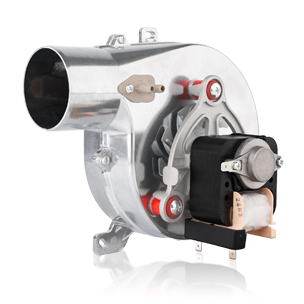
These blowers work at a steady speed. They manage pressure changes without changing the flow rate. You can find them in places like moving materials, cleaning water, and boosting gas.
Positive displacement blowers might not be the right option for high flow rates or low pressure. A big advantage of these blowers is that they give a steady and smooth airflow. This kind of airflow can be really important for some industrial processes.
Centrifugal Blower
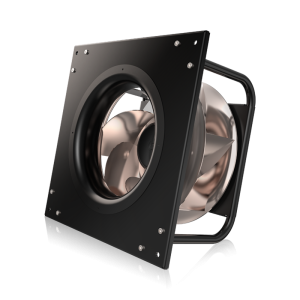
A centrifugal blower uses centrifugal force to work. It boosts the air pressure and speed as air comes in. These blowers create higher pressure compared to normal fans. This is essential when you need a strong airflow with high pressure.
Centrifugal blowers are helpful for moving a lot of air. They work well with high temperatures. This makes them a good fit for many industrial applications. You can commonly find them in places like material handling, combustion, and ventilation systems that need high pressure.
Centrifugal blowers are more adaptable than positive displacement blowers. They can change the airflow to fit what the system needs. This feature makes them right for different industrial tasks.
Applications and Uses
Fans and blowers are useful tools that provide several benefits in homes, offices, and factories. They help keep our areas comfortable. These devices also play a key role in many industries.
Industrial fans and blowers are very important for ventilation systems. They help bring fresh air in and remove harmful fumes. These fans also help keep worksites at the right temperature. Additionally, they are used to move materials through pipes and operate dust collection machines.
Industrial Applications
Industrial fans are larger and more powerful than regular home fans. They work like lungs in factories, warehouses, and manufacturing areas. Their main job is to keep air moving. This helps make a comfortable and safe place for workers.
Industrial fans play a key role in ventilation. They help keep factories at the right temperature. These fans move air around and manage heat. This way, machines and processes run at the proper temperatures.
These fans are important for keeping dust, fumes, and other particles out of the air. They collect and push these harmful things away from where people work. This helps to make the workplace safer and healthier for everyone.
Residential and Commercial Uses
In our homes, fans keep us comfortable. They make a nice breeze on warm days. Fans also help move the air, making it feel less sticky. There are two main types of fans: ceiling fans and stand-alone fans. Both types help make your home feel nice.
Exhaust fans help eliminate bad air and odors. They are especially key in kitchens and bathrooms. These fans clean the air in our homes. This makes our living spaces more pleasant.
Fans do more than just keep us cool. They can also help save energy. By moving air, they reduce how much we need air conditioning. Using fans is a smart choice for staying comfortable in our homes.
Conclusion
In summary, it is important to know the difference between fans and blowers. This will help you choose the right equipment for your needs. Fans are good for moving airflow. Blowers, however, make more pressure and are better for air circulation. Understanding how both work can help you do better and save energy. It is key to select the right type for industrial, residential, or commercial use. Taking care of them will help them last longer. By learning about fans and blowers, you can make smart choices that work for you. If you need help finding the right equipment, feel free to ask for expert advice.
Frequently Asked Questions
When to Choose a Fan Over a Blower?
If you want to cool a big space, a fan is a good option. A fan can create low pressure and indirect airflow. The type of fan you choose will depend on your needs. For general cooling, an axial fan works well. If you need higher pressure, then a centrifugal fan is your best choice.
Can Blowers Be Used for Cooling Purposes Like Fans?
A blower fan is great for several jobs. It helps with cooling too. The fan pushes air in one direction. This makes the area feel cooler. You can have a nice, cool spot because of the direct air from the blower fan.
What Are the Energy Efficiency Considerations?
Fans and blowers help HVAC systems run more efficiently by moving air properly. Choosing the right size and type is essential. Using good electric motors can save even more energy.
How Do I Determine the Right Size for My Application?
The right size depends on several factors. These include airflow, the volume of air that needs to be moved, and the specific direction it should go. It is a good idea to talk to an HVAC professional. They can help you choose the best option. This will help improve overall performance.
Maintenance Tips for Longevity and Optimal Performance
- It is important to clean and oil moving parts often.
- Change old parts when they wear out.
- This helps everything work well.
- It also makes them last longer.
